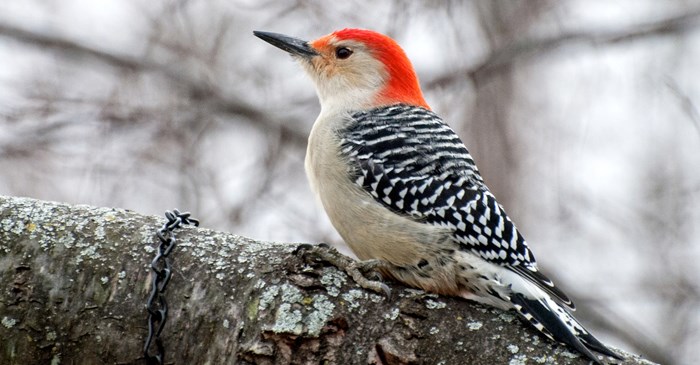The Red-bellied Woodpecker is the epitome of nature-inspired fashion: Their lively patterned black-and-white backs and wings balanced with a tasteful pop of red on the cap is a good look to imitate for any fashionista's city street sashay. At first glance, its name appears to be a misnomer, because the belly of the Red-bellied Woodpecker appears white. It takes an up-close view, but there is some red hiding in the pale-feathered belly.
The Red-bellied Woodpecker is found through much of the eastern half of the U.S., but their population is concentrated in the southeast. Forests are their preferred habitat, but they’re also found in suburbs, parks and open woodlands.
During nesting season, the male Red-bellied Woodpecker attracts a mate by hollowing out a nesting cavity in a dead hardwood or pine tree, while drumming the wood next to the hole. He may also make a hollow in a fence post or choose a nesting box. When a female accepts his invitation, she taps alongside him, and they finish preparing the nest. Nesting pairs may return in the following season, but they’ll likely create a new hole, usually right below the old one.
When the young Red-bellied Woodpeckers leave the nest, they can be seen “at play” in the forest. As they chatter and call excitedly, they’ll fly around while making sudden changes in direction, and alight and fly away quickly. Scientists believe the young birds are practicing and refining the evasive moves they’ll need to survive.
During the spring and summer, the best way to find the Red-bellied Woodpecker is by getting to know their calls. They’re spending their time up in the trees, nesting and foraging for insects on the bark and branches. Like many woodpeckers, they don’t have a song, but their signature sound is drumming on wood.
You may find it easier to get an up-close look during the colder months, as they’ll be more focused on foraging for berries, nuts and seeds. In your landscaping, opt for trees and shrubs that keep their berries, such as hawthorn or mountain ash. At the feeder, the Red-bellied Woodpecker will go for suet, sunflower seeds, peanut hearts, fruit and cracked corn. A specially designed woodpecker feeder filled with Lyric Woodpecker Mix is one way to get these beauties to flock to your feeding station.
